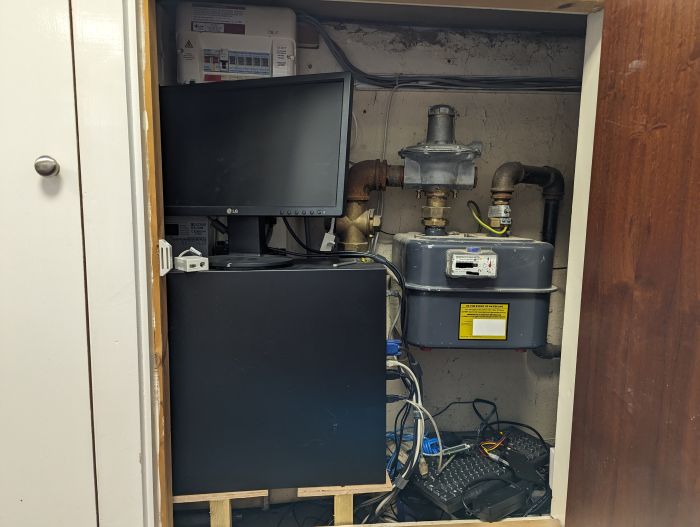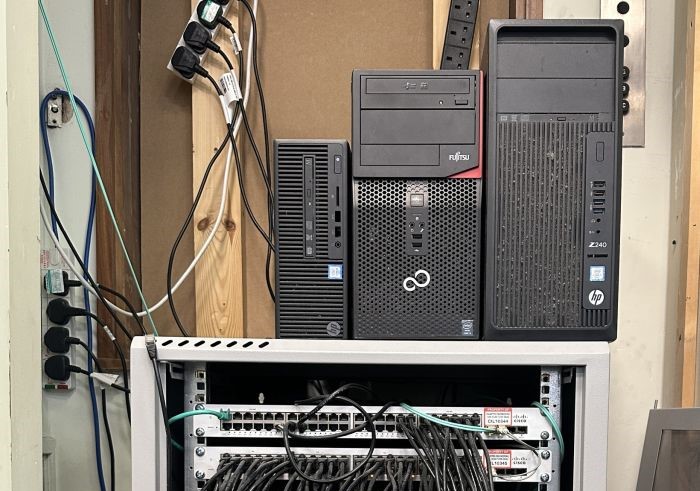Cloudy with a chance of change: Decommissioning and replacing your business server.
Traditional on-premises solutions, the ethereal promise of the cloud, or a harmonious blend of both? Let’s navigate this pivotal crossroads and explore the path to streamlined efficiency and future-ready technology.
By Drew Aspland, 11th August 2023
Should I get rid of my business server?
You’re already painfully aware that technology is evolving, not least because the kids have already got their eyes set on the next iPhone or games console. The same is true for business hardware. Every now and again you, as a business leader, must make the decision to upgrade or replace your IT infrastructure. Your server, or servers, are central to this, and they can be expensive! Should you replace it with another on-premises server, or should you move everything to the cloud (or even somewhere in-between!) And when’s best?
The decision to replace or decommission an on-premises business server can be a big step in embracing modern technologies, and not without good reason. The cost benefits of moving from traditional physical servers to cloud-based solutions have become increasingly compelling. Naturally there are pros and cons to replacing an on-premises business server, and we will examine the potential cost savings, scalability, accessibility, and maintenance advantages later. But it’s also important to address the considerations and challenges that come with such a transition.
When is it time to replace or decommission a server?
So when should you start thinking about replacing your business server? If one or more of the points below rings a bell, then the answer may be ‘soon’:
Outdated Hardware: If your server is just a bit old and is no longer supported by the manufacturer, or is experiencing frequent hardware failures, it may be time to consider a replacement. Performance, reliability, and compatibility with modern software can all be impacted. When a server reaches its End of Life (EOL) or End of Service (EOS) date, it means that the manufacturer will no longer provide updates, security patches, or technical support. Operating an unsupported server poses a fairly serious security risk and can leave your business open to cyber threats. Data breaches and non-compliance can have expensive consequences, including legal and reputational damage.
Performance Issues: If your server is struggling to handle the workload or is experiencing slowdowns, it could be a sign that it’s time for an upgrade. Performance issues can affect productivity, user experience, and overall efficiency of your business operations. Is your server frequently running out of storage space or struggling to handle increased data processing requirements? Consider the server upgrade.
Cost of Maintenance: If the costs of maintaining and repairing your server outweigh the benefits, it may be cheaper to replace it. Aging servers often require more frequent, expensive repairs, with increased downtime. Older servers are also less energy-efficient. Replacing a power-hungry server with a more efficient one can lead to big energy savings. Do it for the planet! Do it for your leccy bill!
Advancements in Technology: Keeping up with the march of progress is important to stay competitive. If your server lacks the latest features and capabilities, upgrading to a more modern solution can provide access to advanced functionalities, improved performance, and enhanced security. Also, if your business is growing rapidly, your current server solution may not be able to scale to meet this demand. Upgrading or replacing a sluggish server, or offloading some of its services, may help to accommodate growth and ensure smooth operations.

Pros of replacing an on-premises business server.
Moving from an on-premises server to a cloud-based solution can often result in tidy cost-savings. With cloud services, you normally pay monthly for what you’ve used. The biggest benefit here is the avoidance of large capex and maintenance costs. Cloud servers are somebody else’s responsibility to maintain!
It’s also scalable. You can easily adjust your cloud servers’ computing power and storage as your business grows or fluctuates. This flex avoids overprovisioning or underutilising your kit. There is no point paying for services you’re not using.
A good cloud service is reliable. As I mentioned above, maintenance is their responsibility, and robust infrastructure and redundancy measures will be in place to ensure high availability and data protection. Service level agreements (SLAs) should be in place too, guaranteeing uptime.
Cloud-based servers enable remote access, allowing employees to access files and applications from anywhere with an internet connection. This flexibility can enhance productivity and collaboration, particularly for businesses with remote workers or multiple locations.
And by moving to a cloud-based solution, you can offload server maintenance and support responsibilities to the service provider. They handle tasks like security updates, hardware maintenance and troubleshooting, freeing up your IT staff’s time to focus on other initiatives.
Cons of replacing an on-premises business server
If you’re moving to cloud-based servers, you have to bear in mind that they rely heavily on internet connectivity. If you experience internet outages or have a slow connection, it can disrupt your access to everything. This dependence on the internet can be a drawback for businesses operating in areas with unreliable or limited connectivity. Have you considered a leased line connection?
‘The cloud’ is just a fancy term for somebody else’s computer, and storing data elsewhere like this raises security concerns for some businesses. While cloud service providers invest heavily in security measures, there’s always a risk of data breaches or unauthorised access. You have to make sure your access and permissions are water-tight. Depending on your industry and geographic location, you may have specific compliance requirements or regulations that govern data storage and processing. Bear this in mind when replacing your business server with cloud solutions.
Shifting from an on-premises server to a cloud-based solution requires careful planning and execution. The migration process can be complex, especially when dealing with large amounts of data and integrating existing systems. If the migration is being handled by Plan IT Support, then you’ll have nothing to worry about. Consider outsourcing this task to somebody that knows what they’re doing.

What are the main services that need to be offloaded when decommissioning a business server?
When decommissioning a business server – whether you’re going to the cloud or not – a number of services and functions need to be given a new home. These services are going to be different for every business, but the common ones are below.
User Authentication and Directory Services: When you ‘log-on’ to a network, user authentication is what permits you access to network services. Without user authentication or directory services, you haven’t really got a user network. This is a vital service.
File Storage and Sharing: Are your network drives hosted on the server? Does your network have roaming user profiles? This data will need somewhere else to live.
Email and communication: The server might host email. It may also host instant messaging services or data repositories like old school SharePoint. There’s online versions of all of these that can be considered during your migration.
Application Hosting & Database Management0: Your on-premises server may also host business-specific programmes and databases. Again, there’s online alternative hosts like AWS or Azure, but you may need to speak to the service developers to make sure they can be moved.
DNS, DHCP and Web Hosting: If your server is responsible for DNS and DHCP (Domain Name System and Dynamic Host Configuration Protocol respectively – your network’s ‘address book’) or web hosting, these functions need to be transferred to other providers. Your network router may be able to handle DNS and DHCP. Domain registrar companies and web hosting services can be used to maintain domain and website hosting.
Print and Fax Services: If you’re in the unfortunate position of requiring printers or – heaven forbid – fax, consider deploying network printers or using cloud-based printing solutions. Virtual fax services or email-to-fax services can be used as alternatives to physical fax machines. Or just pop the fax machine in the bin. It’s 2023.
Security and Firewall Functions: Servers often handle security functions, including firewalls, intrusion detection systems (IDS), or virtual private network (VPN) services. Dedicated firewall appliances, cloud-based security services, or managed security service providers (MSSPs) can be considered as replacements.
Cloud Server Solutions: Where every server has a silver lining.
When decommissioning a business server, it’s important to plan the migration and offloading process carefully to minimise disruptions and ensure a smooth transition. Leaning on IT professionals with experience in server decommissioning (that’s us!) will provide valuable expertise and assistance throughout the process.
While saying farewell to the familiar blinking, whirring box in the corner might tug at the heartstrings, the road ahead promises newfound efficiency, flexibility, and endless opportunities for growth. This shift isn’t solely about technology; it can signify a strategic move that can redefine how you do business, setting the tone for innovation and success in the digital age. At Plan IT Support, we get weirdly excited about helping you navigate this transformation, ready to offer our expertise in seamless server migration services. Let’s embrace this change together.
Head in the clouds? We can bring you back down to earth.